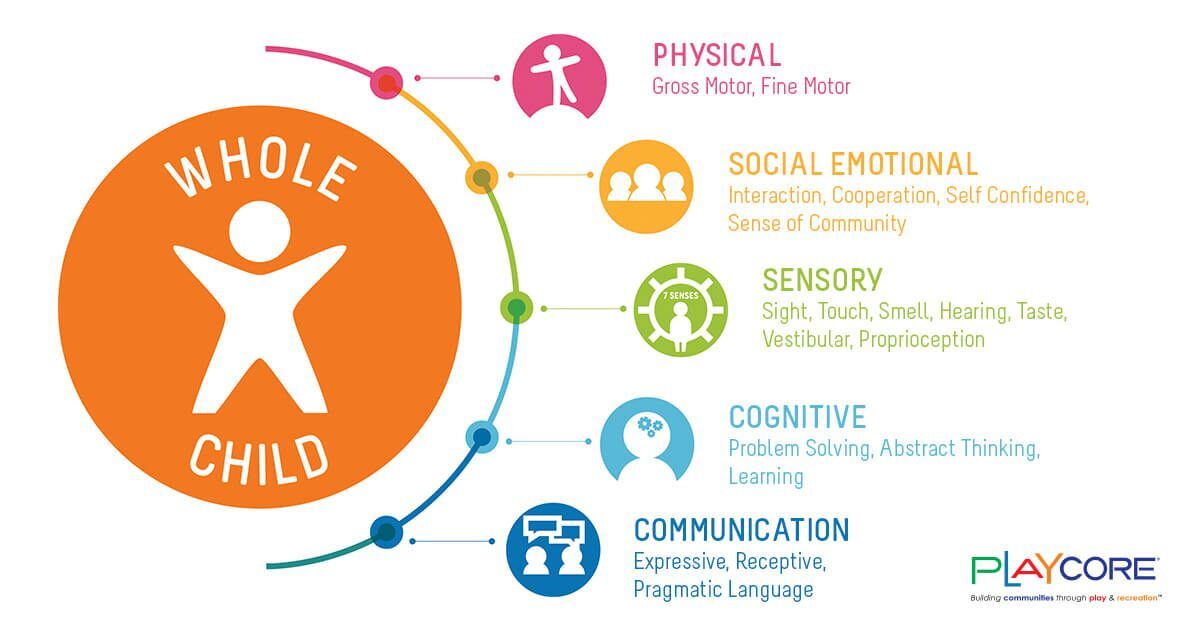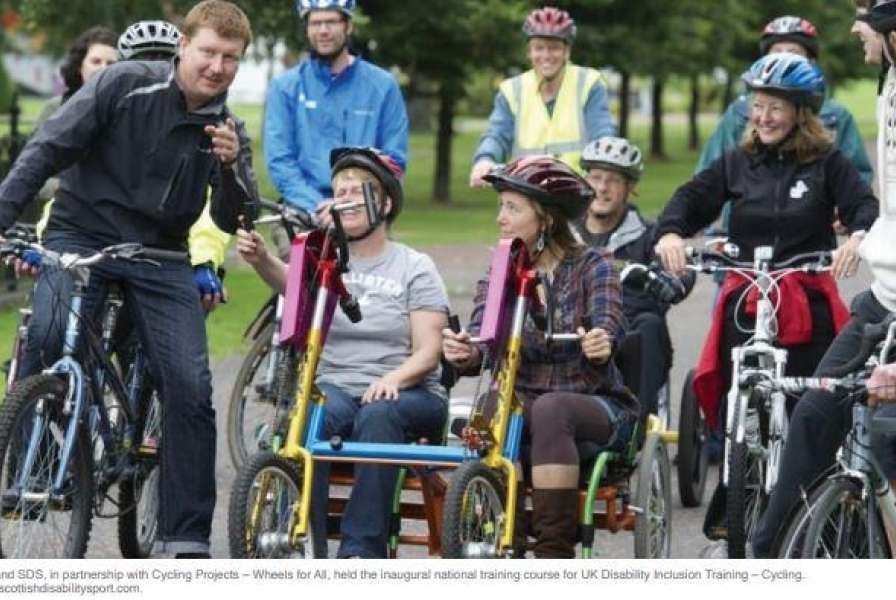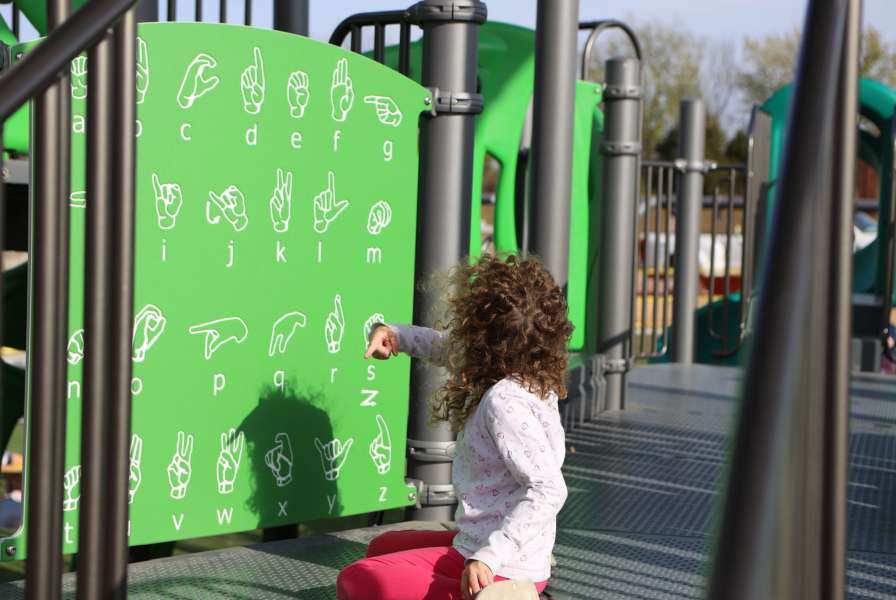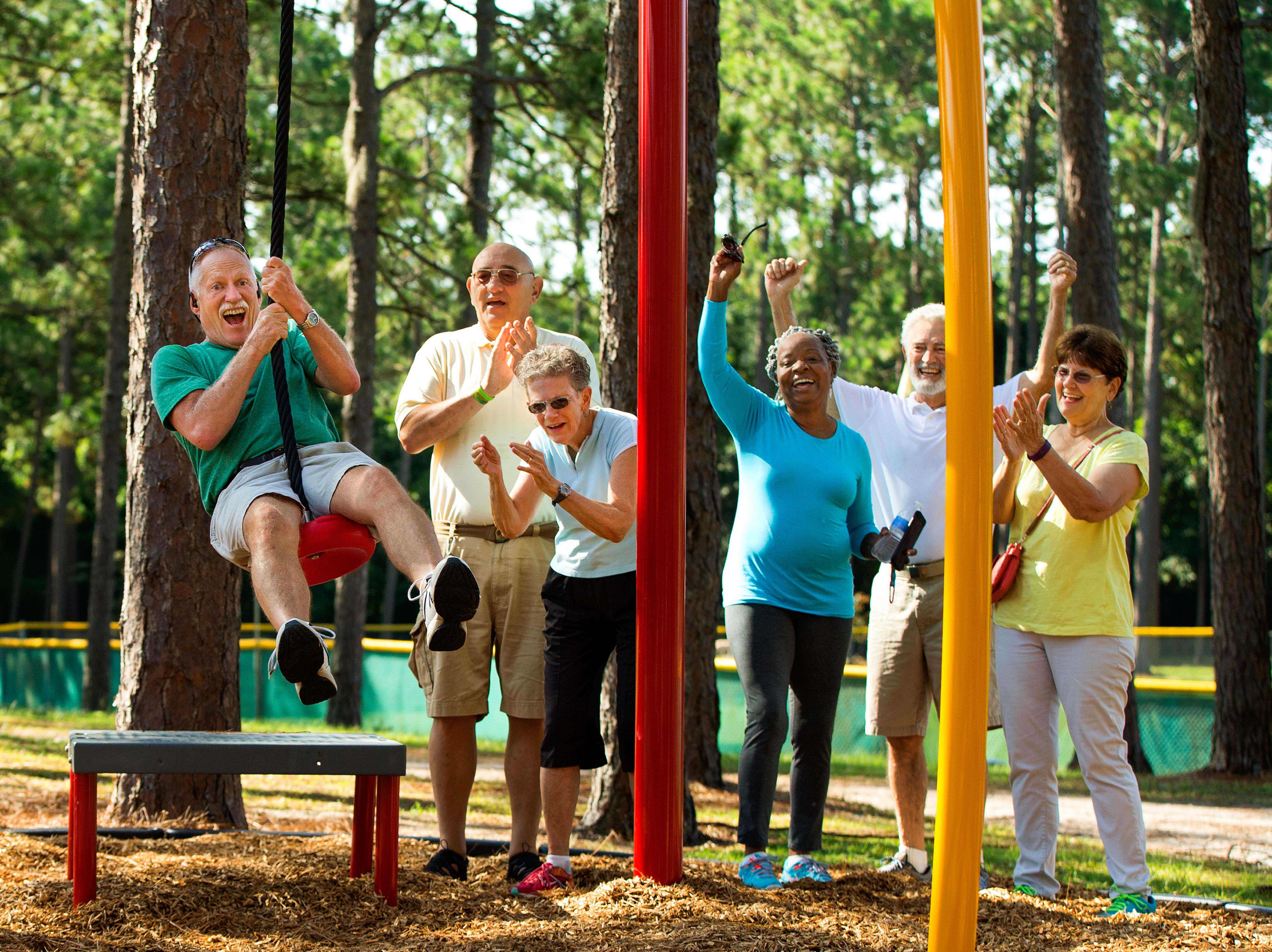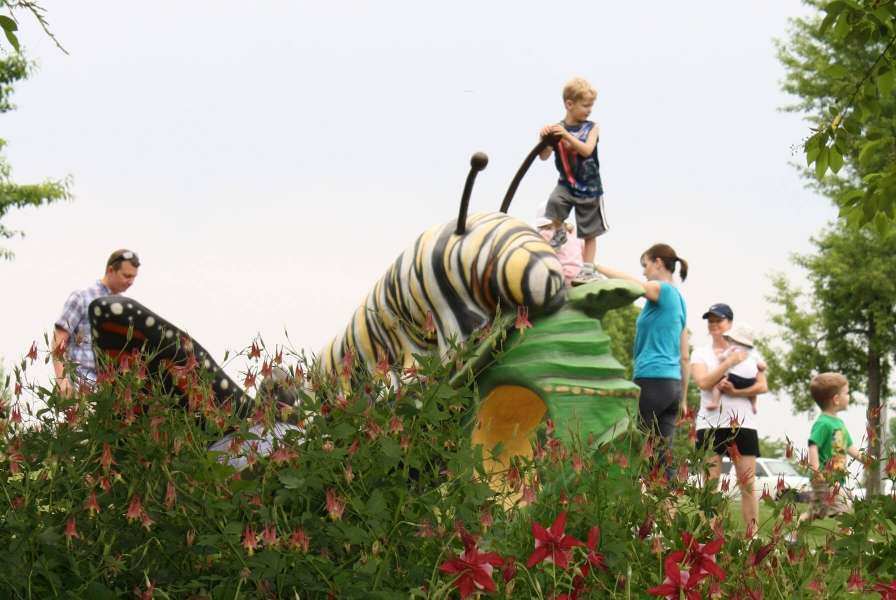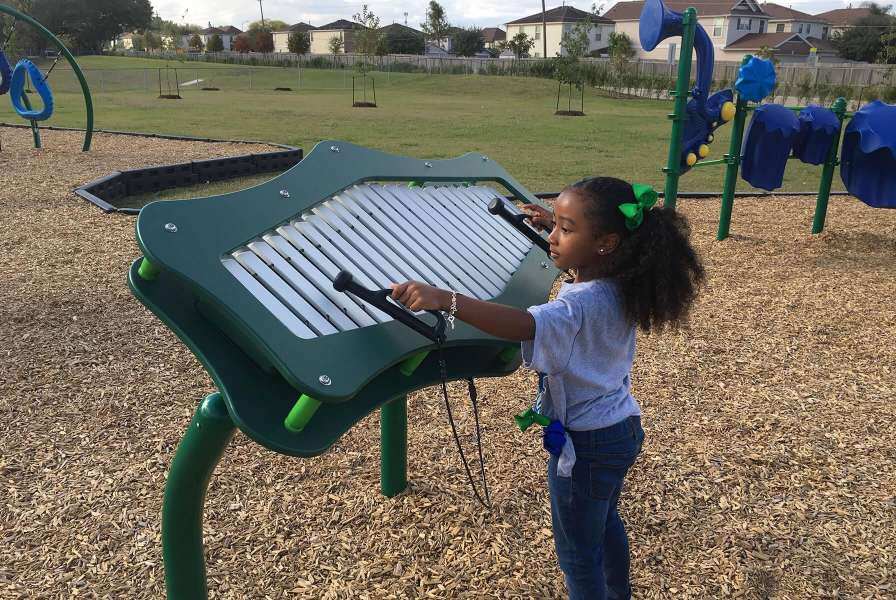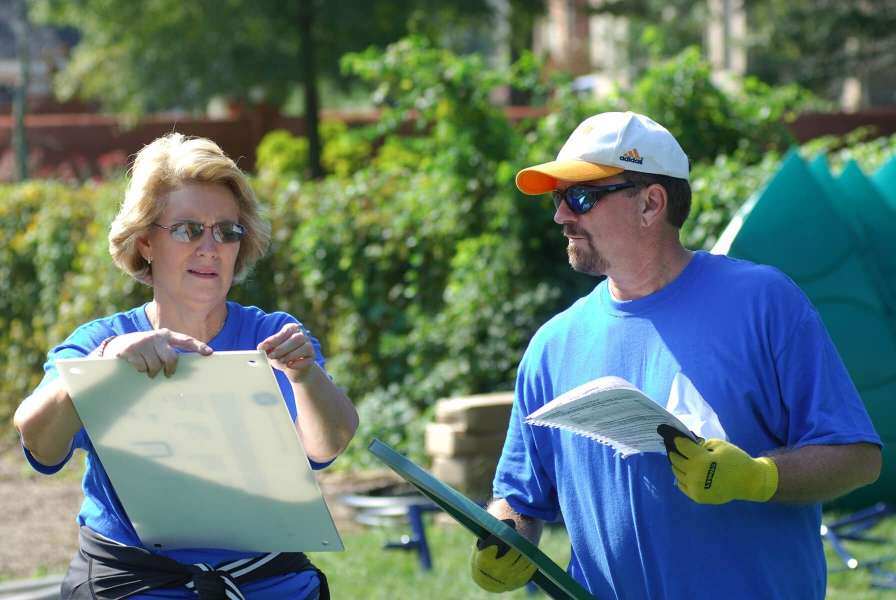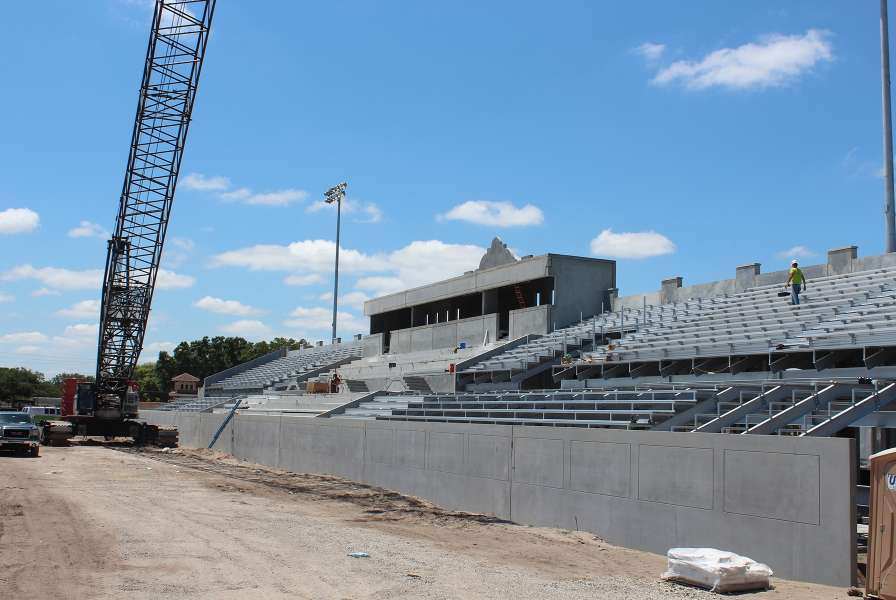Playgrounds can be special places where the developmental needs of all children, including those with disabilities, can be met by providing opportunities for physical, social-emotional, sensory, cognitive, and communicative benefits of play. Children with disabilities need to be able to explore and interact with objects and the environment to support their physical development. Investing in inclusive play for children with disabilities requires supporting their interactions with peers to develop social learning, problem solving, social exchanges, cooperation, turn-taking, roles, and the empathy necessary for social and emotional development.
- Activities where all children play together occurs across the social environment of play, is critical to cognitive development and must be available to children with disabilities.
- Positive sensory development requires children with disabilities be able to regulate their sensory input within an environment.
- Communication development occurs when children with disabilities are able to independently engage in social interactions and effectively communicate with their peers.
Researchers, educators, and early childhood professionals have emphasized the relationship between developmental domains and processes. The developmental domains are linked not only with one another, but also with factors such as culture, social relationships, experience, physical health, mental health, and brain functioning. Therefore, the process of creating truly inclusive and embracing play experiences should start with an appreciation of the five domains of child development.
Physical Domain
The domain of physical development involves biological and physical development, which includes gross motor and fine motor skills, and also addresses growth and physical activity. Motor skills allow children to make purposeful movements and learn the physical characteristics of self and the environment.
Social-Emotional Domain

Social opportunities are one of the most important benefits of play for child development. The social-emotional domain includes the child's experience, expression, and management of emotions and the ability to establish positive relationships with others. It encompasses processes such as social interaction, cooperation, self-confidence, and community roles. Emotional development includes the ability to identify and understand one's own feelings, to accurately read and comprehend emotions in others, to manage strong emotions and their expressions, to control one's own behavior, to develop empathy for others, and to establish and maintain relationships. Inclusive outdoor environments offer many benefits to support children's social-emotional development, they encourage interaction and cooperation, promote self-confidence, and develop a sense of community.
Sensory Domain

The sensory domain includes the seven senses of sight, touch, smell, hearing, taste, vestibular, and proprioception. Often thought of as separate categories, the senses are actually a system that overlaps. The ability to recognize and interpret sensory stimuli serves as the basis for understanding, learning, and knowing a particular action or reaction, which plays a major role in the physical, social-emotional, communication, and cognitive development of a child. Sensory-rich outdoor play environments that address the seven senses as an integrated system into the whole environment can effectively provide opportunities for children to seek sensory relief or input. A child's preferences for sensory stimulation will vary, and their need for sensory stimuli may be adjusted depending on the need for stimulation or need for sensory relief. Children with disabilities may experience (1) heightened sensitivity, (2) sensation avoiding, (3) sensation seeking, and (4) poor registration.
Cognitive Domain
Cognitive development refers to the progressive and continuous growth of perception, memory, imagination, conception, judgment, and reason. Cognition also involves the mental activities of understanding information and using it for problem solving. Inclusive playgrounds should offer opportunities for children to development cognition as they problem solve, engage in abstract thinking, and learn through motivating experiences and discovery.
Communication Domain

The communication and language domain refers to perceiving, understanding, and producing communication/language. Language development and effective communication capabilities are highly dependent on other developmental domains. For example, the social-emotional domain involves both verbal and nonverbal communication, like receptive, expressive, and pragmatic language. Communication helps children learn to understand or comprehend their wants and needs.
Sources for this article can be found in The 7 Principles of Inclusive Playground Design™.
Learn more about Inclusive play here.
